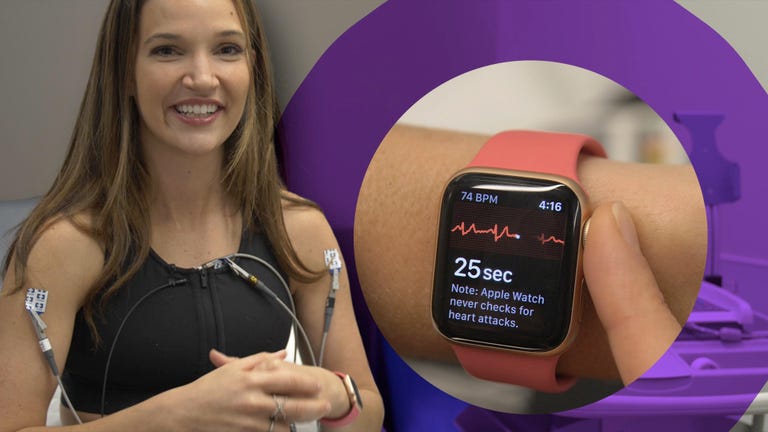Blood pressure is one of the most important health vitals, especially if you have hypertension. Summer travel and activities can make it harder to monitor your blood pressure consistently, but an Apple Watch can help, when paired with devices that measure your blood pressure.

Daily tracking can help you establish a baseline for your version of “normal,” and chart any changes to your levels over time. Work and life stress can cause a spike in your readings, and so can some of the foods you eat. Tracking your blood pressure can also help with early diagnosis and false readings (like if you only have high BP at the doctor’s office), and help you keep an eye on the effects of any new blood pressure medication.

Though at-home monitoring won’t replace a visit to the doctor’s office, it can give you the data you need to know when it’s time to go in.
The Health app on your Apple Watch is a convenient way to sync your blood pressure data in one place on a device that’s always with you.

Watch this: We tested the Apple Watch EKG against a hospital EKG
The smartwatch isn’t equipped to measure your blood pressure alone, but there are tools and devices you can pair it with it that can — usually wireless monitors that connect to your iPhone or Apple Watch and come with an arm cuff and their own app. These devices will automatically sync the data with your Apple Watch’s health app.
Here are some ways your Apple Watch can help keep your blood pressure and health in check.
Blood pressure devices that work with Apple Watch
These five wireless blood pressure monitors sync to your Apple Watch’s Health app.
Omron Evolv Wireless Blood Pressure Monitor ($70): This portable monitor takes clinically accurate readings, and has a built-in screen that shows your readings so you don’t have to consult your phone screen each time. The Omron BPM syncs to your Apple watch via the Omron Connect mobile app using Bluetooth.
Withings Wireless Blood Pressure Monitor ($130): Provides instant color-coded feedback and creates a chart of all your past measurements for easy tracking in its Health Mate app. You can sync your Withings BPM to your Apple Watch via Bluetooth.
QardioArm Wireless Blood Pressure Monitor ($89): Geotracks your readings across locations. Measures your systolic and diastolic blood pressure and can detect an irregular heartbeat. You can set up reminders to notify you when it’s time to check your blood pressure. Connect your QardioArm BPM to your Apple Watch via Bluetooth.
iHealth Feel Wireless Arm Blood Pressure Monitor ($72): Offers up to 200 offline readings. Shows your systolic and diastolic blood pressure on the iHealth App and lets you know if your reading is normal or above average. The iHealth blood pressure monitor syncs to your Apple Watch using Bluetooth.
Control your blood pressure through exercise
It’s well known that regular exercise can help your heart stay strong and healthy.
- You can use your Apple Watch to count your steps so you know if you’re hitting your goal.
- Your watch can track your heart rate with the sensor on the back to help you get fit — you’ll know you’re reaching your goals when your resting heart rate is getting lower.
- You can track your workouts — the watch offers 12 workouts you can choose from, or you can begin any workout and the watch will automatically detect it.
While working out, you can easily monitor your heart rate and set up heart-rate thresholds that notify you in case your heart rate is too high or low.
Keep an eye on your heart rate
If you monitor your blood pressure regularly, you’ll likely also want to keep tabs on your heart’s health. The Apple Watch has FDA clearance for its an ECG feature that records your heart rate rhythm to detect if you have atrial fibrillation (AFib) or another abnormal heart rhythm.
You can use the new ECG app (this is the same as EKG, an electrocardiogram) on your watch after setting up the ECG feature in the Health app. We also recommend importing your health records so you can stay on top of any changes.























+ There are no comments
Add yours